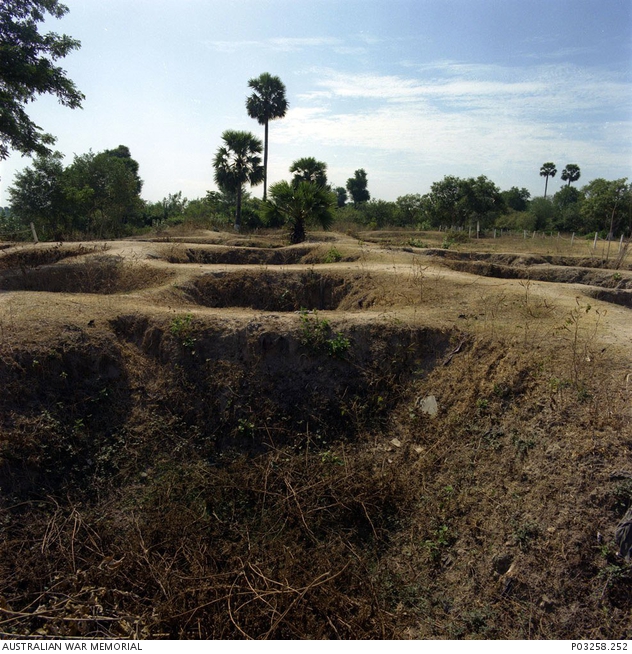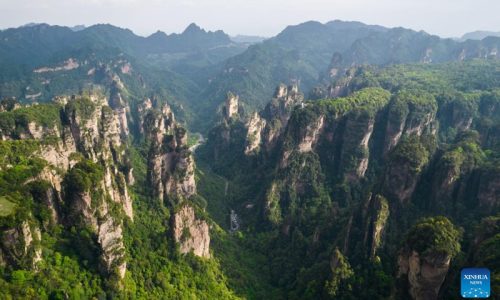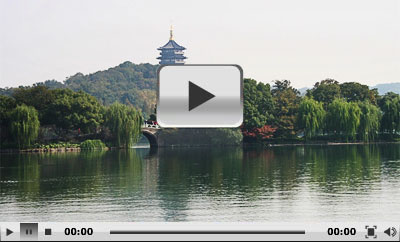Discovering the Killing Fields of Choeung Ek in Phnom Penh, Cambodia: A Deep Dive into History and Remembrance
The Killing Fields of Choeung Ek in Phnom Penh, Cambodia stand as a haunting reminder of one of the darkest chapters in human history. This site, once a place of mass executions during the brutal Khmer Rouge regime, now serves as a memorial to the victims and a symbol of the importance of human rights and justice. Visiting this historic location offers a profound opportunity to reflect on the atrocities committed and to honor those who suffered. The significance of the Killing Fields of Choeung Ek in Phnom Penh, Cambodia extends beyond its tragic past; it is a vital educational site that underscores the need to prevent such horrors from recurring. As you explore the grounds, you will encounter memorials, skulls, and informative displays that narrate the stories of resilience and loss, making it an essential destination for anyone interested in history, human rights, and reconciliation. The preservation of this site ensures that future generations remember the atrocities and learn the importance of safeguarding peace and dignity worldwide.
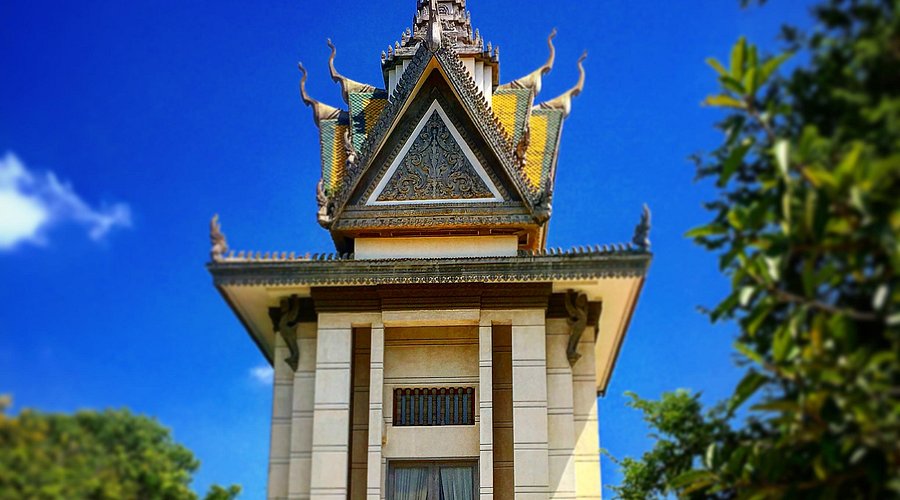
The Historical Significance of the Killing Fields of Choeung Ek in Phnom Penh, Cambodia
The Killing Fields of Choeung Ek in Phnom Penh stand as a haunting reminder of Cambodia’s darkest chapter. During the 1970s, under the Khmer Rouge regime, this site became a mass grave for thousands of victims of political repression and genocide. Understanding the history behind the Killing Fields of Choeung Ek is essential to grasp the magnitude of the atrocities committed and the resilience of the Cambodian people. This site symbolizes the tragic consequences of totalitarian rule and serves as a memorial for those who lost their lives.
The formation of the Killing Fields of Choeung Ek was driven by the Khmer Rouge’s brutal policies aimed at creating an agrarian utopia through mass executions. Initially a peaceful orchard, it was transformed into a site of mass killings, reflecting the regime’s radical ideology. Today, the Killing Fields of Choeung Ek are a poignant reminder of the importance of human rights and the need to prevent such atrocities from recurring. Visiting this site offers a profound insight into Cambodia’s history and the enduring spirit of its people.
Over the decades, the Killing Fields of Choeung Ek have become a symbol of remembrance and resilience. They attract visitors from around the world who come to pay their respects and learn about the tragic events that unfolded here. The site’s historical significance underscores the importance of justice and reconciliation in Cambodia’s journey toward healing. Preserving this memory is vital for future generations to understand the consequences of hatred and violence.
Discovering the Archaeological and Forensic Excavations at Choeung Ek
The discovery of the Killing Fields of Choeung Ek followed the fall of the Khmer Rouge regime, revealing the extent of the genocide. Archaeologists and forensic experts conducted meticulous excavations to uncover mass graves and human remains. These excavations were carried out with utmost respect and sensitivity, aiming to honor the victims and document the atrocities. The findings from Choeung Ek have been crucial in understanding the scale of the crimes committed and providing evidence for justice.
During excavations, thousands of skulls, bones, and personal artifacts were uncovered, illustrating the brutal methods used by the regime. The forensic analysis helped identify victims and provided closure for families. These discoveries have been preserved in memorials and museums, serving as vital educational tools. The archaeological work at Choeung Ek continues to be a testament to the importance of uncovering truth and ensuring accountability for past crimes.
The excavations at Choeung Ek have contributed significantly to Cambodia’s historical record, helping to educate visitors about the horrors of genocide. They also serve as a reminder of the importance of justice and the need to remember the victims. The ongoing efforts to preserve these sites highlight the commitment to honoring the memory of those who suffered and to promoting human rights worldwide.
Guided Tours and Visual Resources at the Killing Fields of Choeung Ek
For visitors to the Killing Fields of Choeung Ek, professional guided tours provide essential insights into the site’s history and significance. These tours include detailed maps, photographs, and explanations of key locations such as mass graves, memorials, and the museum. The visual resources help visitors understand the scale of the atrocities and foster a respectful attitude towards the victims.
The guided tours emphasize the importance of maintaining silence and reverence during visits, ensuring a respectful environment for reflection. Visual aids, including photographs and diagrams, illustrate the methods of executions and the stories of survivors. These resources enhance the educational experience and deepen visitors’ understanding of Cambodia’s tragic history. Proper guidance ensures that the memory of the victims is honored and that visitors leave with a meaningful impression.
Using comprehensive visual guides and expert commentary, visitors can better appreciate the significance of the Killing Fields of Choeung Ek. This approach promotes awareness and encourages responsible tourism. The goal is to educate the public about the importance of human rights and the devastating impact of genocide, fostering a culture of remembrance and respect.
Personal Stories of Survivors and Victims at Choeung Ek
The stories of survivors and victims of the Killing Fields of Choeung Ek are powerful testimonies to human resilience. Many survivors share their harrowing experiences of torture, loss, and survival, providing a human face to the historical tragedy. These personal narratives help keep the memory of the victims alive and serve as a reminder of the importance of justice and reconciliation.
Survivors recount their experiences with vivid detail, describing the brutality they endured and their journey toward healing. These stories highlight the resilience of the human spirit and the importance of remembering the past to prevent future atrocities. Families of victims also share their grief and hope for justice, reinforcing the significance of memorializing this dark chapter in history.
Documentaries, interviews, and exhibitions at Choeung Ek preserve these stories, ensuring that the voices of the victims continue to resonate. They serve as a vital educational resource for visitors and future generations, emphasizing the importance of human dignity and the need to stand against oppression. These personal accounts are essential in fostering empathy and awareness worldwide.
Symbols and Memorials at the Killing Fields of Choeung Ek
The Killing Fields of Choeung Ek feature numerous memorials and symbols that honor the victims and promote peace. The Buddhist stupa filled with thousands of skulls is a central symbol of remembrance, representing the collective suffering of those who perished. Other memorials include engraved stones and sculptures that convey messages of hope, forgiveness, and resilience.
These memorials serve as powerful visual reminders of the atrocities committed and the importance of reconciliation. They encourage visitors to reflect on the tragedy and to commit to preventing such crimes in the future. The symbols at Choeung Ek are designed to inspire compassion and understanding, fostering a culture of peace and human rights.
Annual memorial ceremonies and religious rituals held at the site reinforce the significance of remembrance and healing. These events unite communities and visitors worldwide in honoring the victims and reaffirming the commitment to justice. The memorials at Choeung Ek stand as enduring symbols of resilience and the universal desire for peace.
The Role of the Killing Fields in Cambodia’s Collective Memory
The Killing Fields of Choeung Ek are integral to Cambodia’s collective memory and national identity. They serve as a stark reminder of the regime’s brutality and the importance of safeguarding human rights. The site’s preservation ensures that future generations understand the consequences of hatred and intolerance.
Over the years, Choeung Ek has become a symbol of resistance and hope. It influences Cambodian culture, arts, and education, fostering a collective commitment to never forget the past. Museums, documentaries, and educational programs centered around the site help instill awareness and promote reconciliation.
Maintaining the memory of the Killing Fields is a shared responsibility. It involves honoring the victims, educating the public, and advocating for justice worldwide. The site’s significance extends beyond Cambodia, serving as a universal symbol of the need to prevent genocide and uphold human dignity.
Global Cultural and Artistic Impact of the Killing Fields
The tragedy of Choeung Ek has inspired numerous works of art, literature, and film that depict the horrors of genocide and promote human rights. Documentaries and movies portray the brutal realities faced by victims, raising awareness and fostering empathy worldwide. These artistic expressions serve as powerful tools for education and remembrance.
In literature, authors have written compelling stories and poems that reflect on the suffering and resilience of survivors. Artistic installations and memorials around the world draw inspiration from Choeung Ek, emphasizing the universal importance of preventing such atrocities. The cultural impact of the Killing Fields underscores the need for global solidarity against genocide.
Through these creative works, the message of peace, justice, and remembrance continues to resonate, ensuring that the lessons of Choeung Ek are passed down through generations. Art and culture play a vital role in transforming tragedy into a universal call for human dignity and compassion.
Visitor Guidelines and Respectful Conduct at Choeung Ek
Visiting the Killing Fields of Choeung Ek requires respectful behavior to honor the victims and preserve the site’s dignity. Visitors should maintain silence, avoid disruptive activities, and follow the instructions of guides and staff. Proper conduct ensures a meaningful and respectful experience for all.
It is recommended to use guided tours and educational materials to deepen understanding of the site’s history. Visitors should dress modestly, refrain from taking inappropriate photographs, and avoid touching memorials or remains. Respectful behavior is essential to uphold the sanctity of the memorial.
Participating in memorial ceremonies and observing local customs further demonstrates respect. The goal is to foster awareness, empathy, and a shared commitment to human rights. Responsible tourism at Choeung Ek helps preserve its significance as a place of remembrance and education for future generations.
Challenges in Preserving the Historic and Memorial Site of Choeung Ek
Maintaining the integrity of the Killing Fields of Choeung Ek involves ongoing efforts and international cooperation. Preservation includes safeguarding mass graves, memorials, and the museum from natural decay and human damage. Funding, awareness, and proper management are critical to ensure the site’s longevity.
Challenges include environmental factors, such as erosion and vegetation overgrowth, as well as issues related to tourism management and funding shortages. Educating the public about the importance of preservation and securing resources are vital steps in overcoming these obstacles. Technology, such as digital documentation and conservation techniques, can aid in these efforts.
Protecting Choeung Ek as a UNESCO heritage site and promoting responsible tourism are essential for its sustainability. The site’s preservation is a moral obligation to honor the victims, educate the world, and prevent history from repeating itself. Collective responsibility and continued commitment are key to safeguarding this symbol of human resilience.
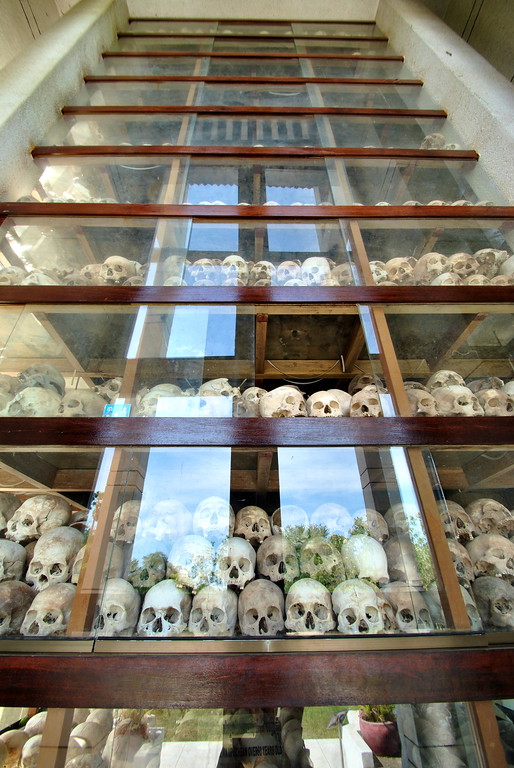
Frequently Asked Questions about the Killing Fields of Choeung Ek in Phnom Penh, Cambodia
- What is the historical significance of the Killing Fields of Choeung Ek?
- The Killing Fields of Choeung Ek serve as a haunting reminder of Cambodia’s darkest chapter during the 1970s under the Khmer Rouge regime. This site was the mass grave for thousands of victims of political repression and genocide. It symbolizes the tragic consequences of totalitarian rule and stands as a memorial for those who lost their lives, emphasizing the importance of human rights and the need to prevent such atrocities from recurring.
- How were the mass graves at Choeung Ek discovered?
- Following the fall of the Khmer Rouge regime, archaeologists and forensic experts conducted meticulous excavations to uncover mass graves and human remains. These excavations revealed thousands of skulls, bones, and personal artifacts, helping to understand the scale of the atrocities and providing crucial evidence for justice and reconciliation efforts.
- What role do archaeological excavations play at Choeung Ek?
- The excavations have been vital in uncovering the extent of the genocide, identifying victims, and preserving evidence. They have contributed to Cambodia’s historical record, helping educate visitors about the horrors faced and emphasizing the importance of justice. The findings are preserved in memorials and museums to honor the victims and promote awareness.
- Are there guided tours available at Choeung Ek?
- Yes, professional guided tours provide detailed insights into the site’s history, including maps, photographs, and explanations of key locations like mass graves and memorials. These tours foster respectful reflection and deepen visitors’ understanding of Cambodia’s tragic history.
- What personal stories are associated with Choeung Ek?
- Many survivors share harrowing experiences of torture and loss, providing a human face to the tragedy. These stories highlight resilience and serve as powerful reminders of the importance of justice and reconciliation, ensuring that the victims’ voices continue to resonate.
- What symbols and memorials are present at Choeung Ek?
- The site features numerous memorials, including a Buddhist stupa filled with thousands of skulls, engraved stones, and sculptures. These symbolize remembrance, hope, and resilience, inspiring reflection and promoting peace.
- How does Choeung Ek contribute to Cambodia’s collective memory?
- It is an essential part of Cambodia’s national identity, serving as a stark reminder of brutality and the importance of safeguarding human rights. The site fosters resistance and hope, influencing culture, arts, and education to promote reconciliation and prevent future atrocities.
- What is the global impact of the Killing Fields?
- The tragedy has inspired numerous works of art, literature, and films that depict genocide’s horrors and promote human rights. These creative expressions raise awareness worldwide and serve as educational tools to prevent future atrocities.
- What are the visitor guidelines at Choeung Ek?
- Visitors should behave respectfully, maintain silence, follow guides’ instructions, dress modestly, and avoid disruptive activities. Participating in memorial ceremonies and observing local customs show respect and help preserve the site’s sanctity.
- What challenges are faced in preserving Choeung Ek?
- Preservation involves safeguarding graves, memorials, and the museum from natural decay and human damage. Challenges include environmental factors, funding shortages, and managing tourism. Efforts include digital documentation, conservation techniques, and international cooperation to ensure longevity.
- Why is it important to remember the Killing Fields?
- Remembering the Killing Fields helps prevent history from repeating itself, educates future generations about the consequences of hatred, and honors the victims. It is a collective responsibility to promote justice, peace, and human dignity worldwide.
- How do memorial ceremonies at Choeung Ek promote healing?
- Annual memorial events and religious rituals foster unity, reflection, and forgiveness. They reinforce the importance of remembrance, justice, and reconciliation, helping communities and visitors honor victims and promote peace.
- What role does education play at Choeung Ek?
- Educational programs, museums, and documentaries help visitors understand the history and significance of the site. They promote awareness of human rights, the dangers of hatred, and the importance of tolerance and justice.
- How can responsible tourism contribute to the preservation of Choeung Ek?
- Respectful behavior, participation in guided tours, and adherence to guidelines ensure the site remains a respectful memorial. Responsible tourism helps maintain the site’s integrity and promotes awareness about the importance of remembrance and human rights.
- What is the significance of the memorials at Choeung Ek?
- The memorials serve as visual symbols of remembrance, hope, and resilience. They inspire reflection on past atrocities and reinforce the commitment to peace, justice, and preventing future genocides.
